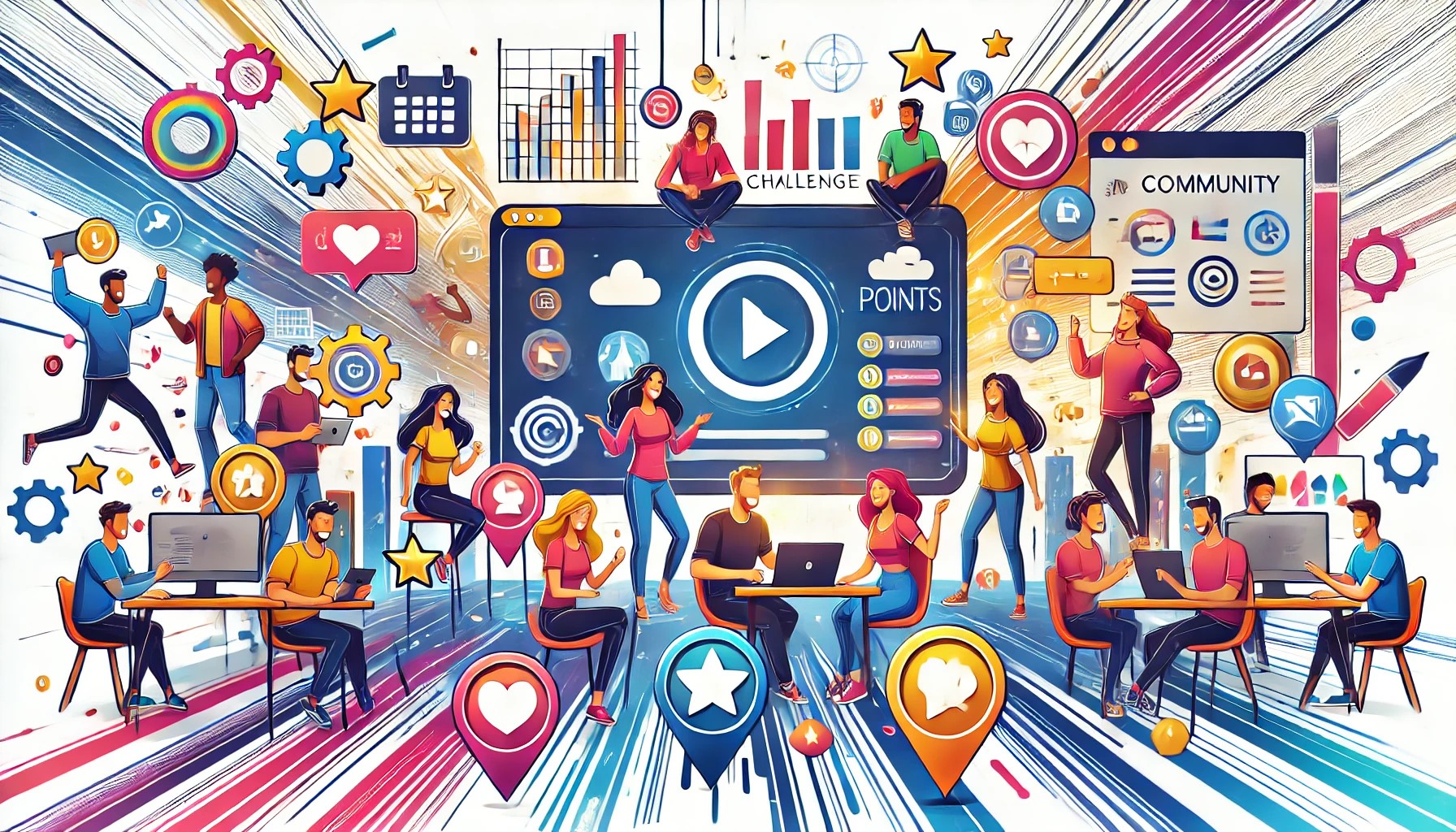
Are your community members passive observers, or are they actively engaged and coming back for more? If you've ever wondered how to turn your online community into a thriving, engaged hub, community gamification might just be the game-changer you need.
Let's dive into everything you need about gamification and how to unlock its full potential for your community. Spoiler alert: by the end of this guide, you'll be ready to get your members hooked, engaged, and loyal for the long haul.
What is Gamification?
Gamification is the secret sauce that turns casual members into loyal, active participants. It involves using game-like mechanics, such as points, badges, and leaderboards, to incentivize users and keep them returning. It's not just for video games either — businesses and communities worldwide are embracing this strategy to foster deeper engagement.
Why does it work? Well, humans are wired to seek rewards, recognition, and progress. We love unlocking achievements and gaining status, and—let's be honest—a little healthy competition never hurts anyone, right?
Core Mechanics of Gamification in Communities
So, what game elements drive community engagement? Let's break down the key mechanics that will transform your community from meh to magnificent.
1. Points, Badges, and Leaderboards: Imagine your members earning points for contributing to discussions, helping others, or attending community events. Over time, they can collect badges and climb up the leaderboard, sparking a competitive spirit. These elements don't just keep people engaged — they make participation fun!
2. Challenges and Quests: Who doesn't love a challenge? By introducing quests or time-bound challenges, you can guide members through key actions (like completing their profiles or sharing insights) while adding a layer of excitement. It's the perfect blend of urgency and accomplishment.
3. Progress Bars and Streaks: Progress bars show members' proximity to unlocking the next level or badge. Genius. Duolingo's streak system, for example, keeps people coming back daily to maintain their progress. The visual cue of seeing how far you've come (and how far you've got to go) is a huge motivator.
Enhances Community Loyalty and Engagement
Getting members to engage is only half the battle — keeping them loyal and active over time is the ultimate win. So, how does gamification drive long-term community loyalty?
1. Onboarding with Gamified Quests: One of the best ways to hook new members is to give them an immediate sense of achievement. Create a "New Member Quest" where they complete small tasks, like setting up a profile or joining their first discussion, to earn points or badges. It's an easy way to ensure they start off on the right foot.
2. Recognition Equals Loyalty: People love recognition. When your community members earn badges or appear on leaderboards, they feel valued and accomplished. This feeling fosters loyalty, and they're far more likely to stick around and contribute.
Tailoring to Your User
Here's the thing: no two communities are the same. What works for a professional learning network might not fly in a hobbyist group. Tailoring your gamification strategy to your audience is essential.
Corporate Communities might thrive on leaderboards that reward knowledge sharing, while hobbyist communities may prefer unlocking special features or exclusive content as rewards. The key is to know your members and match the game mechanics to their motivations.
Building a Thriving Gamified Community
So, are you ready to turn your community into an engaged, thriving hub? It's time to start small — introduce points, badges, or a leaderboard, and watch how gamification transforms passive participants into loyal, active members.
Remember, gamification is more than just a fun addition. It's a powerful tool for building deeper connections, increasing user retention, and fostering a sense of belonging. Start experimenting with gamification today, and see your community come alive.
Ready to gamify your community? Start with simple quests or badges and track how your members respond. The future of community engagement is here — it's time to get in the game!